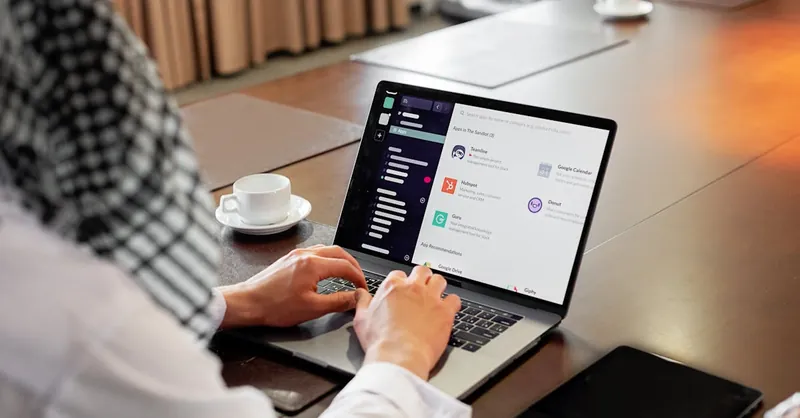Using AI to Prioritize Tasks Effectively
Category: Productivity & Automation
Unlocking Productivity: How AI Can Help You Prioritize Tasks Efficiently
For professionals, entrepreneurs, and tech enthusiasts striving to maximize productivity, mastering task prioritization is key — yet it remains one of the most challenging productivity hurdles. If you've landed on this page, you likely already understand that managing a growing list of tasks and deadlines demands more than just traditional to-do lists or manual methods. You’re seeking a smarter, tech-driven approach to prioritization that can reduce overwhelm and help you focus on what truly moves the needle.
This blog post dives into how AI-powered tools and automation techniques are revolutionizing task management. Rather than generic advice, here you’ll find a comprehensive, step-by-step guide on leveraging AI’s ability to analyze, rank, and optimize your workload based on priority, deadlines, and impact. We'll break down the core technologies, practical applications, and best practices tailored for busy professionals and entrepreneurs who want to work smarter — not harder.
Our approach balances technical insight with actionable strategies, demystifying AI without jargon but with thorough explanations to empower you to confidently implement these techniques into your daily workflow. In a landscape saturated with automation advice, this guide stands out by focusing on the intersection of productivity psychology, AI capabilities, and real-world task prioritization, ensuring you get a holistic understanding that translates into measurable efficiency gains.
- Unlocking Productivity: How AI Can Help You Prioritize Tasks Efficiently
- Understanding Task Prioritization Challenges in Modern Workflows
- How AI Enhances Task Prioritization
- Key Features of AI Tools for Prioritizing Tasks
- Integrating AI with Existing Productivity Systems
- Using AI to Analyze and Rank Tasks Dynamically
- Automation Workflows for Task Prioritization
- Overcoming Common Barriers and Concerns in AI-Powered Task Prioritization
- Measuring Impact: Tracking Productivity Improvements from AI-Driven Prioritization
- Future Trends: The Evolving Role of AI in Personalized Task Management
Understanding Task Prioritization Challenges in Modern Workflows
In today’s fast-paced work environment, manually prioritizing tasks has become increasingly complex, often leading to common pitfalls that significantly hinder productivity. Professionals regularly grapple with overwhelming to-do lists, shifting deadlines, and competing priorities without a systematic approach to discern which tasks are most impactful. This manual juggling frequently results in decision fatigue, missed deadlines, and misallocation of time toward low-value activities.
Some of the most prevalent challenges in traditional task prioritization include:
- Lack of objective criteria: Without a clear framework, it’s difficult to evaluate the urgency and importance of tasks, causing inconsistent prioritization across projects and days.
- Cognitive overload: Constantly switching between tasks and reprioritizing on the fly drains mental energy, reducing focus and increasing the risk of errors.
- Procrastination on critical work: When overwhelmed, professionals tend to avoid complex or high-stakes tasks, inadvertently pushing urgent priorities down the list.
- Difficulty managing dependencies: Tasks are often interrelated, yet manual prioritization rarely accounts for dependencies, leading to bottlenecks and workflow disruptions.
These challenges produce significant productivity costs such as wasted hours, increased stress, and suboptimal output quality. By contrast, integrating AI-driven prioritization can help overcome these obstacles by providing consistent, data-backed insights that optimize task sequencing and resource allocation. Understanding the inherent weaknesses of manual task prioritization lays the foundation for appreciating how AI can deliver transformative productivity improvements in complex workflows.

Image courtesy of Breakingpic
How AI Enhances Task Prioritization
The integration of artificial intelligence (AI) into task prioritization transforms how professionals manage their workflows by leveraging advanced technologies such as machine learning (ML), natural language processing (NLP), and predictive analytics. These AI concepts enable task management systems to go beyond static lists and simple deadlines, delivering dynamic, context-aware prioritization that aligns with your goals, deadlines, and work habits.
Machine Learning: Smarter Prioritization through Data Insights
Machine learning algorithms analyze historical task data, user behavior, and contextual factors to identify patterns and predict which tasks should take precedence. By continuously learning from completed activities and adjusting to shifting priorities, ML-powered tools help you focus on high-impact activities instead of peripheral tasks. This adaptive approach reduces the guesswork in task prioritization and optimizes your day-to-day decision-making process.
Natural Language Processing: Understanding Your Tasks Like a Human Assistant
Natural language processing allows AI systems to interpret and organize unstructured task information such as emails, meeting notes, and to-do list entries. By understanding the context, urgency, and relationships between tasks described in natural language, NLP algorithms provide more meaningful prioritization recommendations. For example, an AI tool can detect deadlines embedded within email texts or infer task dependencies from descriptions, ensuring that your priority list reflects not only explicit due dates but also nuanced work requirements.
Predictive Analytics: Anticipating Future Workloads and Bottlenecks
Predictive analytics applies statistical models to forecast upcoming task demands, possible delays, and resource constraints. This foresight enables AI-powered prioritization tools to schedule tasks proactively, flag potential conflicts, and recommend adjustments before bottlenecks occur. By anticipating challenges, predictive analytics empowers you to allocate time and resources effectively, minimizing reactive firefighting and maximizing productivity gains.
Together, these AI capabilities create a sophisticated task prioritization framework that adapts in real-time, processes complex inputs, and helps you concentrate on what truly matters. Harnessing machine learning, natural language processing, and predictive analytics equips professionals with the tools to overcome traditional productivity barriers and achieve smarter, data-driven task management.

Image courtesy of Ivan Samkov
Key Features of AI Tools for Prioritizing Tasks
AI-driven task prioritization tools come equipped with a range of powerful capabilities designed to streamline decision-making and maximize productivity. Understanding these key AI features will help you select the right solutions and harness their full potential to manage your workload more effectively.
Task Categorization and Contextual Analysis
One of the foundational capabilities of AI prioritization tools is automated task categorization. Leveraging natural language processing (NLP), these tools analyze task descriptions, emails, meeting notes, and calendar entries to classify tasks into meaningful categories—such as "urgent," "strategic," or "routine." This contextual analysis provides a clearer overview of your workload, enabling smarter grouping and sequencing of activities based on their intrinsic nature and relevance to your goals.
Deadline Prediction and Dynamic Scheduling
Beyond simply tracking due dates, advanced AI systems apply deadline prediction algorithms to estimate realistic completion times by considering factors like task complexity, historical performance, and team availability. This feature adjusts schedules dynamically when unexpected delays or new urgent tasks emerge. As a result, AI tools help you avoid missed deadlines and reduce last-minute rushes by proactively recalibrating your priorities.
Urgency Scoring and Impact Assessment
AI-powered prioritization frequently incorporates urgency scoring, which quantitatively rates tasks based on multiple criteria such as deadline proximity, task dependencies, and potential impact. These scores provide an objective, data-driven basis for ranking your daily to-do list, preventing common pitfalls like procrastination or over-focusing on low-priority tasks. Some AI platforms also integrate impact assessment models that weigh how much a task contributes to key business outcomes or personal goals, ensuring you invest time in activities that truly matter.
Resource Optimization and Workload Balancing
Effective prioritization isn’t only about what to do but also how to allocate resources optimally. AI tools analyze your available time, team capacity, and skillsets to recommend task assignments and workload distribution that enhance efficiency and prevent burnout. Features like resource optimization identify bottlenecks or overcommitments and suggest adjustments, enabling a more balanced and sustainable approach to work. This capability is especially valuable for project managers and entrepreneurs managing multifaceted teams and complex workflows.
By integrating these features—task categorization, deadline prediction, urgency scoring, and resource optimization—AI task prioritization tools empower professionals to take control of their schedules with precision and confidence. These intelligent systems transform chaotic to-do lists into clear, actionable plans aligned with strategic priorities and real-world constraints, helping you work smarter and achieve lasting productivity gains.

Image courtesy of Matheus Bertelli
Integrating AI with Existing Productivity Systems
To fully harness the power of AI-driven task prioritization, it is crucial to seamlessly integrate AI tools with your current project management and communication platforms. Popular systems like Asana, Trello, Slack, and Outlook are staples for many professionals and teams, and connecting AI prioritization engines to these platforms ensures your productivity workflow remains cohesive, streamlined, and efficient.
How to Connect AI Prioritization Tools with Key Platforms
-
Asana & Trello Integration
Many AI task management tools offer native integrations or API connections with Asana and Trello. This allows AI algorithms to automatically pull your task lists, project deadlines, and comments directly from these platforms. The AI can then analyze task urgency, dependencies, and resource assignments to provide prioritized to-do lists or suggest schedule adjustments without requiring you to manually export or duplicate your data. -
Slack Integration
Communication channels are often where task requests, updates, and deadlines emerge in real time. Integrating AI tools with Slack enables automatic detection and extraction of actionable items from conversations and shared files. AI can prioritize these tasks contextually, send reminders in relevant channels, or even create prioritized task cards in linked project management tools, ensuring nothing falls through the cracks. -
Outlook Integration
Since Outlook is a central hub for calendar events, emails, and task assignments in corporate environments, AI-driven prioritization tools that sync with Outlook can parse incoming emails for deadlines and commitments. They can dynamically update your task list and calendar, send prioritized notifications, and recommend optimal time slots for focused work based on your existing schedule and workload.
Best Practices for Ensuring Smooth AI Integration
- Centralize Data Sources: Ensure all critical task information—from emails and chats to project boards—is accessible by the AI tool to maximize prioritization accuracy.
- Customize AI Settings: Tailor prioritization criteria and notification preferences within the AI platform to align with your team’s workflow and communication style.
- Train Your Team: Encourage consistent use of AI-connected platforms and educate team members on how AI insights will supplement their task management habits.
- Leverage Automation Flows: Use built-in automation in platforms like Asana or Slack to trigger actions based on AI priority scores, such as escalating urgent tasks or rescheduling non-critical ones.
By strategically linking AI-powered prioritization engines with your existing productivity systems, you create a unified, intelligent workflow that minimizes manual input, enhances visibility across tasks, and boosts overall efficiency. This integrated approach transforms scattered data into actionable insights, helping you maintain laser focus on the highest-value activities and make smarter decisions every day.

Image courtesy of Mikhail Nilov
Using AI to Analyze and Rank Tasks Dynamically
One of the most powerful advantages of AI in task prioritization is its ability to analyze and rank tasks dynamically, adapting to evolving project demands and personal workflows. Unlike static to-do lists, AI evaluates multiple critical factors simultaneously—such as deadlines, task dependencies, workload balance, and priority shifts—to produce a continuously updated, context-aware priority order that aligns with your real-time needs.
AI systems employ several sophisticated techniques to accomplish this dynamic ranking:
- Deadline Sensitivity: AI models weigh the urgency of tasks by constantly monitoring approaching deadlines. Tasks that grow nearer to their due date automatically receive higher priority, ensuring timely completion without last-minute rushes.
- Dependency Mapping: By detecting dependencies between tasks—whether sequential steps or collaborative inputs—AI prevents workflow bottlenecks. It prioritizes prerequisite tasks that unblock subsequent activities, maintaining smooth project progression.
- Workload Balancing: AI assesses your current work capacity and distributes attention evenly across tasks to avoid burnout and multitasking pitfalls. This balance prevents overloading certain time blocks or team members while keeping high-impact tasks front and center.
- Priority Shifts and Contextual Awareness: When business goals change or urgent issues arise, AI tools recalibrate priorities in real-time. They intelligently interpret updates such as added meetings, shifting deadlines, or stakeholder feedback to reprioritize your task list accordingly.
By integrating these dynamic evaluation criteria into your task management, AI delivers highly personalized and adaptive prioritization that evolves with your workflow complexity. This ensures your focus remains on the right tasks at the right time, empowering smarter decision-making and sustained productivity growth amid fast-changing work environments. Whether managing daily responsibilities or high-stakes projects, AI-driven dynamic ranking transforms how you sequence and tackle your workload, making task prioritization more intuitive and effective than ever before.

Image courtesy of Photo By: Kaboompics.com
Automation Workflows for Task Prioritization
Leveraging automation workflows triggered by AI prioritization results can dramatically streamline your task management cycles by reducing manual oversight and increasing responsiveness. Once AI has dynamically analyzed and ranked your tasks based on criteria like urgency, dependencies, and resource availability, automation can take over to ensure that your productivity system remains efficient and proactive throughout the workday.
Key Automation Triggers Driven by AI Prioritization
-
Automated Reminders and Notifications
AI-powered tools can automatically generate smart reminders for high-priority tasks, sending notifications via email, Slack, or mobile alerts exactly when you need to take action. These reminders adapt based on real-time priority shifts, preventing important deadlines from slipping through the cracks without causing notification fatigue. -
Task Reassignment and Load Balancing
When AI detects an overloaded team member or predicts a scheduling conflict, it can trigger workflows to reassign tasks dynamically. Automation ensures tasks are distributed optimally across available resources without manual intervention, preventing bottlenecks and empowering teams to maintain consistent momentum. -
Status Updates and Progress Tracking
AI-driven automation workflows can update task statuses automatically in your project management platforms (like Asana or Trello) as tasks move through their lifecycle—from “To Do” to “In Progress” to “Completed.” This real-time syncing eliminates redundant status check-ins, improves transparency, and accelerates decision-making based on accurate progress visibility.
Streamlining Task Management Cycles with Automation
By combining AI-powered task prioritization with smart automation workflows, you minimize manual task juggling and enhance your ability to focus on high-impact work. Automated workflows create a seamless feedback loop where priority changes immediately trigger corresponding actions, such as:
- Rescheduling lower-priority tasks to later time slots
- Notifying stakeholders of urgent task escalations
- Initiating follow-ups for stalled or delayed items
This integration fosters a more agile and resilient task management cycle, allowing professionals and teams to respond dynamically to shifting demands without disruption. Ultimately, embedding AI-triggered automation into your productivity toolkit transforms task prioritization from a static checklist activity into a continuous, optimized system that saves time, reduces stress, and drives consistent results.

Image courtesy of Ivan Samkov
Overcoming Common Barriers and Concerns in AI-Powered Task Prioritization
Despite the transformative potential of AI to boost productivity through smarter task prioritization, many professionals encounter barriers and concerns that can hinder adoption and effective implementation. Addressing these challenges head-on is essential to maximize the value AI tools bring while maintaining user trust and alignment with individual goals.
Tackling Skepticism and Building Trust
A common hesitation is skepticism about whether AI can truly understand the nuances of human work priorities. Professionals often worry that AI recommendations may override personal judgment or fail to reflect unique project contexts. To overcome this, it is crucial to view AI as an augmented intelligence partner—a tool that synthesizes data and patterns but still relies on user input for final decisions. Encourage frequent user feedback loops, transparency in AI decision criteria, and customizable prioritization settings, so users retain ultimate control and confidence in AI-driven suggestions.
Navigating Implementation Challenges
Adopting AI-based prioritization tools requires thoughtful integration with existing workflows and technologies. Common challenges include data silos, tool fragmentation, and resistance to change. Mitigating these involves:
- Starting with pilot programs to test AI tool efficacy in a controlled environment.
- Ensuring seamless integration with core platforms like email, calendars, and project management software.
- Providing thorough training and ongoing support to facilitate smooth transitions.
- Prioritizing AI solutions with intuitive interfaces to minimize disruption and learning curves.
Safeguarding Data Privacy and Security
Data privacy remains a paramount concern as AI tools access and analyze sensitive information from emails, calendars, and documents. It’s essential to select AI platforms that adhere to robust privacy standards, including:
- Data encryption both in transit and at rest
- Compliance with regulations such as GDPR and CCPA
- Clear data usage policies ensuring no unauthorized sharing or sales of personal information
- Options for on-premises deployment or private cloud hosting for sensitive environments
Transparent communication about how data is collected, stored, and used cultivates trust and eases concerns.
Aligning AI Recommendations with User Goals
Ensuring that AI prioritization aligns with individual and organizational objectives demands customizable AI frameworks. Users should be able to:
- Define priority rules based on personal values or key performance indicators (KPIs)
- Adjust weighting of urgency, impact, and dependencies according to evolving project needs
- Override or reorder AI-suggested tasks easily without losing adaptive benefits
This balance of autonomy and automation empowers users to leverage AI insights without feeling constrained or disconnected from their work priorities.
By proactively addressing skepticism, integration hurdles, data privacy, and alignment with user judgment, professionals can unlock AI’s full potential to enhance task prioritization without sacrificing control or security. This creates a trusted partnership between human expertise and artificial intelligence, driving smarter workflows and sustained productivity growth.

Image courtesy of Anastasia Shuraeva
Measuring Impact: Tracking Productivity Improvements from AI-Driven Prioritization
Adopting AI-powered task prioritization isn’t just about working smarter—it’s about delivering measurable productivity gains and enhanced focus that translate into real business or personal outcomes. To harness the full value of AI prioritization methods, it’s essential to implement robust tools and track relevant metrics that accurately reflect improvements in efficiency, time management, and goal attainment.
Essential Tools for Monitoring AI-Driven Productivity Gains
-
Time Tracking Software
Integrating AI prioritization tools with time tracking platforms like Toggl, RescueTime, or Clockify enables precise measurement of how task focus shifts after adoption. You can monitor whether time spent on high-impact, priority tasks has increased and quantify reductions in time lost to distractions or low-value activities. -
Productivity Dashboards
Comprehensive dashboards within AI task managers or third-party analytics tools provide real-time visualizations of task completion rates, adherence to deadlines, and workload distribution. These insights help you assess if AI-driven prioritization is improving your ability to meet deadlines and balance workloads without burnout. -
Goal-Tracking and OKR Platforms
Linking AI-powered workflows with goal management systems like Weekdone or Perdoo ensures that prioritized tasks align closely with your objectives and key results (OKRs). Measuring progress against strategic goals validates that AI prioritization is not just speeding up work, but enhancing outcome-oriented productivity.
Key Metrics to Evaluate Efficiency and Focus Enhancements
- Task Completion Rate: Monitor the percentage increase in completed priority tasks within set time frames to gauge effectiveness of AI recommendations.
- Average Time to Completion: Track reductions in the time taken to finish high-priority tasks, reflecting improved focus and resource allocation.
- Deadline Compliance: Measure improvements in meeting deadlines, indicating better planning and foresight enabled by AI insights.
- Context Switching Frequency: Use software analytics to detect decreases in multitasking or unnecessary task switching, which correlate with enhanced concentration.
- User Engagement with AI Insights: Track how often users accept, modify, or override AI prioritization suggestions to assess relevance and trust in AI outputs.
By systematically measuring these indicators using integrated tools, professionals and teams can concretely demonstrate the efficiency gains and sharper focus driven by AI-powered task prioritization. This data-driven feedback loop not only validates the effectiveness of AI implementation but also uncovers opportunities for continuously refining algorithms and workflow strategies to maximize productivity outcomes over time.
Image courtesy of Negative Space
Future Trends: The Evolving Role of AI in Personalized Task Management
As AI technology advances, the role of artificial intelligence in task prioritization is becoming increasingly personalized, proactive, and integrated with emerging digital experiences. Future trends in AI-driven task management focus on deeper personalization, cognitive assistance, and immersive interfaces that promise to revolutionize how professionals organize and execute their daily workflows.
Deep Personalization through AI and Behavioral Insights
Next-generation AI tools will leverage advanced behavioral analytics and contextual learning to tailor task prioritization not only based on deadlines and dependencies but also on individual work styles, energy cycles, and long-term goals. This level of deep personalization means AI can adjust task recommendations based on factors such as:
- Peak productivity hours and cognitive load patterns
- Personal motivation and stress indicators
- Evolving priorities derived from real-time feedback and changing business objectives
By combining these insights, AI will deliver highly customized task schedules that optimize both performance and well-being, reducing burnout and maximizing sustained focus.
Cognitive Task Assistance: Beyond Simple Prioritization
Emerging AI capabilities are shifting from ranking tasks toward providing cognitive assistance, which means actively supporting decision-making and problem-solving within task workflows. Future AI assistants will:
- Offer intelligent suggestions for breaking down complex tasks into manageable subtasks
- Detect when you might need additional resources or collaboration help
- Anticipate potential obstacles and recommend contingency plans
- Provide real-time coaching to improve productivity habits and time management skills
This cognitive layer transforms AI from a passive tool into an active productivity partner, helping users navigate uncertainty and complexity with confidence.
Integration with Augmented Reality (AR) and Voice Commands
The convergence of AI with augmented reality (AR) and voice-activated technologies is set to redefine user interaction with task management systems. Imagine prioritizing, updating, or visualizing your task list hands-free while immersed in a smart workspace environment. Key developments include:
- AR overlays that project prioritized task lists and project timelines directly into your physical workspace for better situational awareness
- Voice-enabled AI assistants capable of receiving natural language commands to adjust priorities, create tasks, or provide status updates without interrupting workflow
- Multimodal interaction combining voice, gesture, and visual cues to create an intuitive, seamless task management experience
These innovations will enable professionals and entrepreneurs to interact with AI prioritization tools more naturally and efficiently, reducing friction and cognitive load.
Preparing for the Future of AI-Powered Task Management
To stay ahead and capitalize on these trends, it's essential to:
- Adopt flexible AI platforms that support customizable personalization layers and can integrate with emerging technologies like AR and voice interfaces.
- Maintain a learning mindset to adapt workflows as AI assistants evolve from simple prioritization engines into cognitive collaborators.
- Explore early applications of immersive and voice-driven task management tools to identify new productivity gains and workflow enhancements.
By embracing the evolving role of AI in personalized task management, professionals will not only enhance their current productivity but also future-proof their workflows against rapid technological shifts, ensuring smarter, more adaptive work habits for years to come.

Image courtesy of Kindel Media
